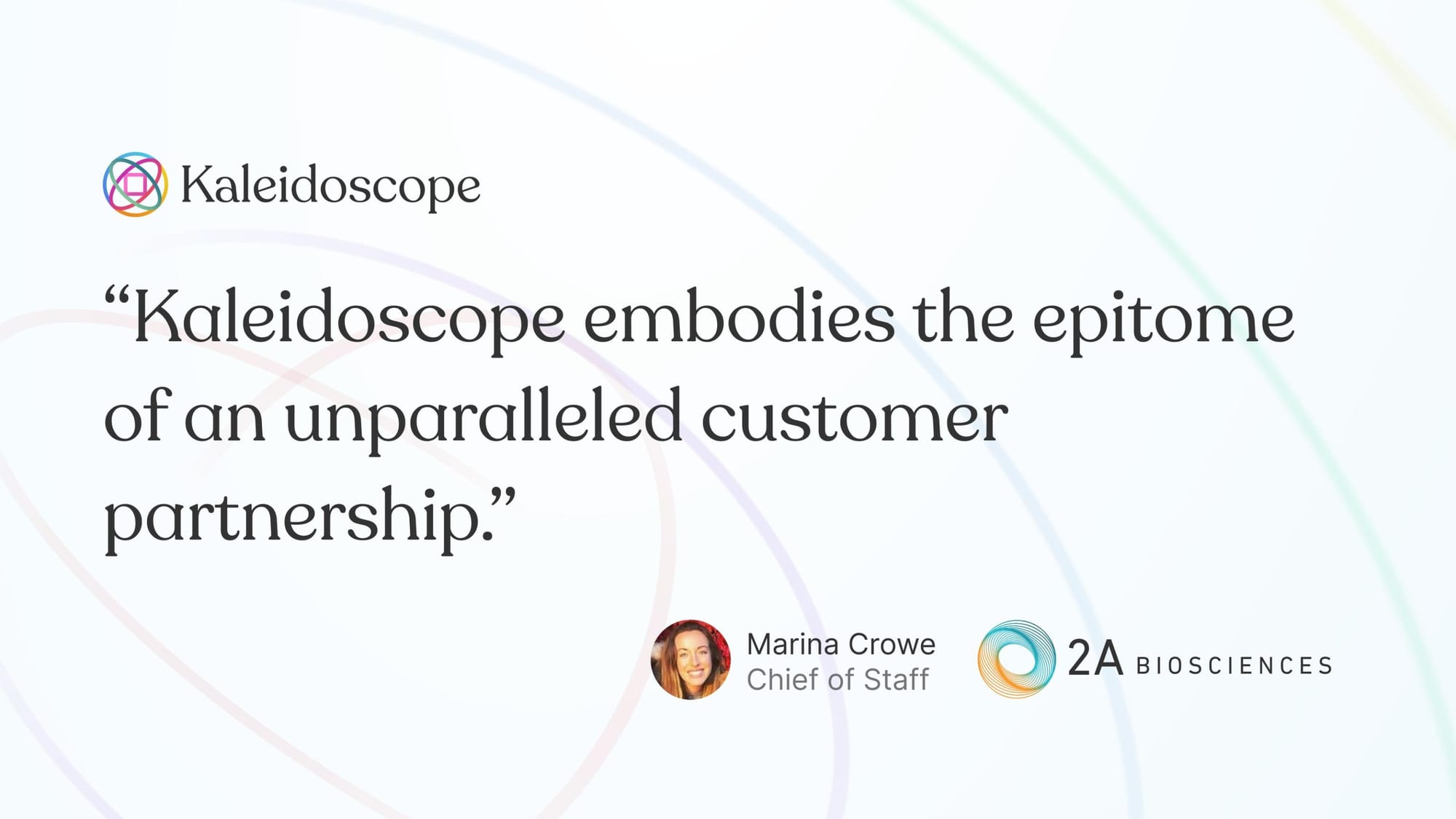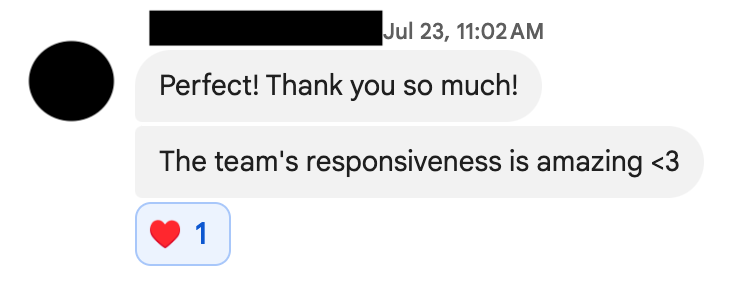Why we invested in customer success at <10 people and <10 enterprise accounts
Customer success is a core pillar for most B2B businesses. But at product-driven startups, this typically isn't emphasized until the business has matured a bit and started scaling. So why did we at Kaleidoscope invest time and money into this as early as we did? If anything here resonates, please reach out!

At Kaleidoscope, we did something not a lot of early stage software companies do: we invested in customer success unusually early on. This decision has paid dividends over and over – it ensured alignment from the start, streamlined onboarding, and paved the way for us to work together collaboratively and ensure we’re effective at supporting customer needs long term.
It may seem obvious to say that an emphasis on customer success can make all the difference between a company that gets customers and one that doesn’t - but investing in it early is something that differentiated us from most early-stage, product-based teams. Within ~1 year of starting to build Kaleidoscope, we realized just how critical customer success would be, which coincided with when we began formalizing our first set of annual customer engagements. Maja, who had joined Kaleidoscope as one of the first employees, stepped up to spearhead this, and began shaping our processes on that front.
It’s important to note that our ‘first set’ of annual enterprise customers was less than 10. We haven’t met many people building software for biotech that think about customer success without at least a double digit customer base – but we tried to put ourselves in the shoes of the biotechs using us, and think about what would matter to them. As a team, we came to the decision that investing time and energy into developing that muscle would help us understand customers’ needs better, reveal our blind spots quicker, and ultimately improve conversion and retention.
We started to find that people took us more seriously because we focused on their experience and made sure each step, from the moment they engaged with Kaleidoscope, was clear (rather than just expecting them to figure out our product entirely on their own). We have always been careful to balance intuitive design with effective onboarding – we wanted our product to be extremely user-friendly, and for new users to feel pleasantly surprised at how straightforward set-up and onboarding was. It goes back to why we started Kaleidoscope in the first place: there’s a high cost to disorganization, and we wanted to make sure our customers knew we felt strongly about supporting them, from the first moment they considered us as a partner.
Along the way, we figured out that customer needs vary. Some prefer minimal interaction – they get ‘turned off’ if they find out there’s a long onboarding process. But there’s others who want more support and white-glove service in getting set up. We designed our customer success process to be as flexible as possible. For example, we schedule three standing calls post-onboarding to check in on our customers – all of these calls are completely optional. We also give each customer assigned contacts from both the engineering and customer success teams, to offer the right kind of help when needed.
Our onboarding process itself serves as a way to gather information to guide our product roadmap. It’s not sufficient for us when customers say they want to use Kaleidoscope to ‘track things.’ We want to dig deeper and understand why they need it and what kinds of specific improvements they expect as a result. This is a core pillar of our customer success ideology: what we’re building at Kaleidoscope needs to meaningfully move the needle on R&D outcomes, and this can and should evolve with our customer base. It’s the job of the Customer Success team to be the voice of biotechs in internal discussions and really advocate for what they want.

And the results of embracing a system that puts customer success front and center, are noticeable. From exciting endorsements and testimonials, to private messages expressing delight at our approach to partnership, it’s been incredible seeing the resulting positive feedback loops at play.
As game-changing as incorporating customer success has been, we’ve also learned and adapted in the process. For example, we learned that inviting too many people to the initial setup call can be too chaotic and counterproductive (the ‘too many cooks in the kitchen’ analogy). Now, our process involves a kickoff call with just one or two key people responsible for setup. If any data transformations are needed, we handle those over the next one to two weeks, and then have a follow-up call to show the customer the updated data and explain how to use the platform moving forward.
At this point, we offer the optional standing check-ins mentioned above, and support for onboarding the rest of their team through open office hours, presentations, or video tutorials. This structured, time-bound approach with a few key voices has proven to be much more effective, and results in a total turnaround time of a few weeks to get up and running, end-to-end (rather than the ~several months that’s become normalized in this field).
Each of these touch points is also a really important chance for us to build rapport and strengthen the customer relationship. We don’t want to adopt the typical SaaS mindset that customer churn is inevitable and we can just ‘replace one customer with the next.’ Rather, when we start working with someone, we immediately picture them as a long-term engagement, and we work hard to frame Kaleidoscope as a reliable partner that delivers delightful product experiences, responds quickly, and anticipates needs over time.
Ultimately, starting with a solid customer success strategy early on has been a game-changer for Kaleidoscope. It’s allowed us to create a process that makes sure our customers feel supported and confident with our product right from the get-go. This upfront effort has helped us better understand what our customers need, align our product with those needs, and build stronger relationships.
If you want to chat more about anything we wrote, or you’re interested in finding a way to work together, let us know!
